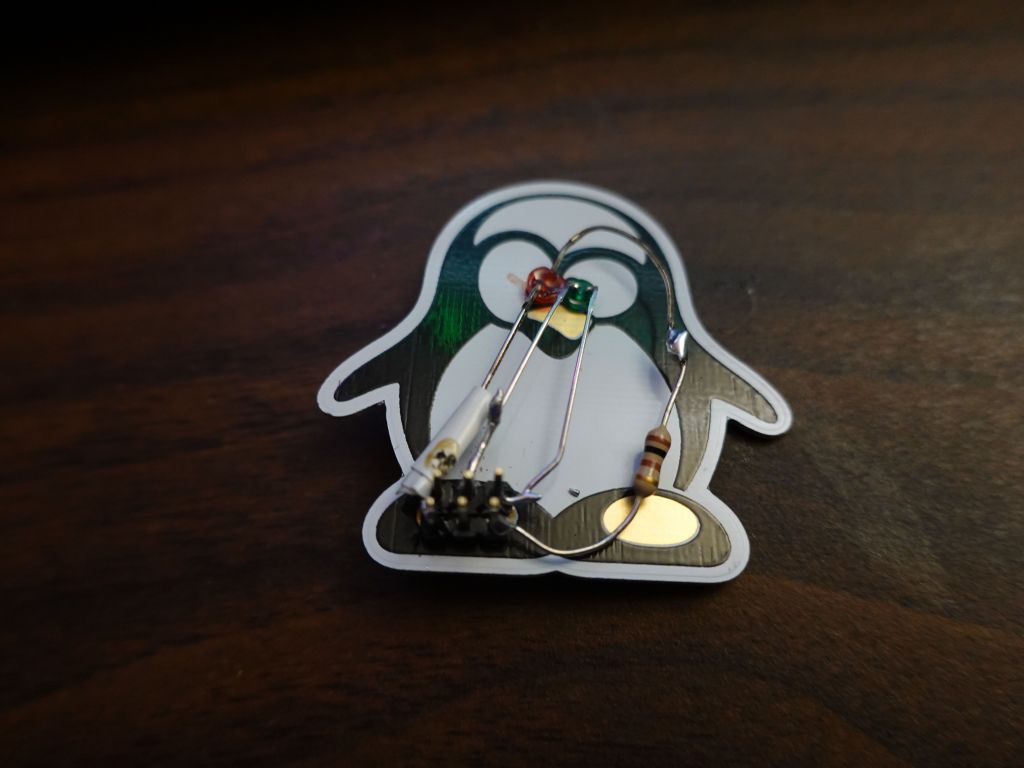π
2021-01-23 01:01
in Arduino, Linux
The LCA organizers were nice enough to send me a couple of badges for the LCA 2021 virtual conf (virtual because of covid). It was a chance to try micropython. That part was interesting, but the regular ESP32 wasn't the best chip for micropython, installing new version of the code and testing it had too much overhead compared to the newer S2/S3 chips that are supported by adafruit's micropython fork where it's much quicker to install new code and test it:

I hacked the capacitive touch SAO penguins to add obvious missing stuff :)

then got the 2 original I2C screens to display blinking eyes and worked on the SPI screen

SPI is a bus that allows multiple devices, so I added 2 screens

getting the Arduino_GFX lib to support both screens was a bit challenging, but got it working

